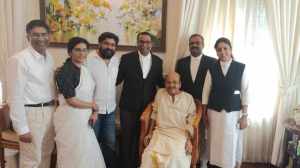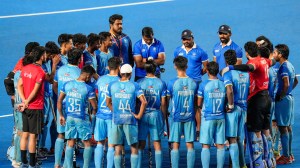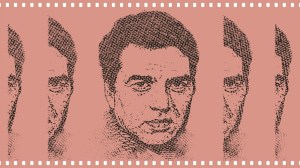Cracks in the jigsaw
Are we going back to post-election alliances rather than pre-poll coalitions?
Recent experience of coalition politics began with attempts to keep both the Congress and the BJP away (1989-1998). The second phase saw two coalitions led by those same two parties (1999-2004). Are we now going back to post-election alliances rather than pre-poll coalitions?
Just when coalitions were appearing to stabilise,they have started cracking. First,it was the UPA-LF coalition that split on the rock of the nuclear deal. But the NDA was not to be left behind: it steadily kept losing partners the National Conference,Trinmool,and finally the BJD. One would have thought that the Congress would seize the initiative and create a larger alliance before the elections; but the party,even while forging an alliance with Mamata Banerjee,chose to literally throw away partners in a too-clever-by-half move,announcing instead that it would not have any national level alliance. Come election season and everyone is finding new allies and finding excuses to dump older allies.
This takes away the artificial bipolarity that politics had assumed for some time and alerts us to the essentially fractured character of the political space. In Uttar Pradesh and Bihar,this would produce at least four-cornered contests; Maharashtra,Karnataka,and Andhra Pradesh would see triangular contests; and so on. In January,the UPA was all set to make a comeback; suddenly,the picture has become more crowded and contingent.
A quick look at the history of coalition politics in the recent past shows that except the Left Front and perhaps the early alliance of the Shiv Sena and BJP in Maharashtra very few alliances were either ideological or with any common political programme. Anti-Congressism was the driving force behind much of it. Thus,the BJP carefully cultivated a friendship with anti-Congress forces like the BJD in Orissa,splinters of the Janata Dal like the Samata and the Lok Janashakti,etc. That gave the BJP the critical mass required for forming the NDA. As the ability of the BJP to function as a nucleus of anti-Congressism gets eroded,these parties have no use for the BJP.
At the same time,no party seems to be in a position to win a clear mandate. So,coalitions are going to stay. Two scenarios appear to be within the realm of possibility. The first is that there will be no clear-cut pre-election alliances: this would allow parties to test their real power and base among different sections and regions. This would also allow them to enter into negotiations after elections in a more realistic context. While this seems to be the calculation of many parties,the trouble is that ad hoc politics and unrealistic shares in power due to coalition arithmetic have left most parties organisationally weak a cost of coalition politics,with its disconnect from the electorate and its cynical attitude to programmes and ideologies.
Another scenario is that of the marginalisation of the so-called national parties Congress and BJP and the shift of the initiative towards state-level players yet again. Looking at what Mayawati and Mulayam Singh Yadav are up to,Naveen Patnaik,Sharad Pawar and Lalu Prasad and Ramvilas Paswan have all chosen to keep their distance from the BJP and Congress and wait for the post-election scenario to develop. Very clearly,Mulayam,Lalu and Pawar want to have an upper hand in the state-level coalitions that may be finally forged,and thus in the post election negotiations. While both the NDA and UPA were forged at the initiative of the BJP and Congress respectively,and served the primary interests of these two parties,latest developments indicate that the new alliances that may emerge would have state-level parties in the drivers position.
What has made this possible? Three things have contributed. First,the calculated risk the LF took in deserting the UPA altered the last four years political equations. Without any ambition about national-level power for itself,and no possibility of winning a national mandate,the Left has always nurtured the ambition of reigning from behind the scenes and positioning itself as the nucleus of non-Congress,non-BJP forces the classic third force (or is it the second force?). So long as it supported the UPA,the LF only hurt the NDA. The moment it cut itself loose from the UPA,it went back to that role it has sought for itself throughout the last decade of the twentieth century.
Second,the dramatic rise of Mayawati in UP must have sent warning signals to all those parties and leaders nursing ambitions of gaining by coalition politics. Should Mayawati wrest the initiative in this election,the opportunities for many a prime ministerial candidate will shrink. Her victory in UP also indicated that not joining any pre-existing alliance could create its own dividends.
Third,and perhaps most significant,the latest developments have yet again brought into sharp focus the lack of clear vision in the Congress. It is not just a question of smart electoral strategy. That is part of it,but more than that,the Congress has refused to redefine itself and hence been trapped by its own inflated self-image. In 2004,the Congress regained power almost providentially; the Vajpayee government was not unpopular,and yet many factors led to its undoing. At that moment the Congress had two options: it could have redefined itself like New Labour,as advised by some,or it could have fashioned an intelligent compromise learnt from the politics of the post-Mandal era. The party did neither. It simply trudged along expecting that its star will rise with the rising son. The collapse of the party with a difference,and the refusal of the Congress to redefine itself,thus open up the possibility of the third phase of coalition politics in a span of two decades.
The author teaches political science at the University of Pune
expressexpressindia.com
- 01
- 02
- 03
- 04
- 05































